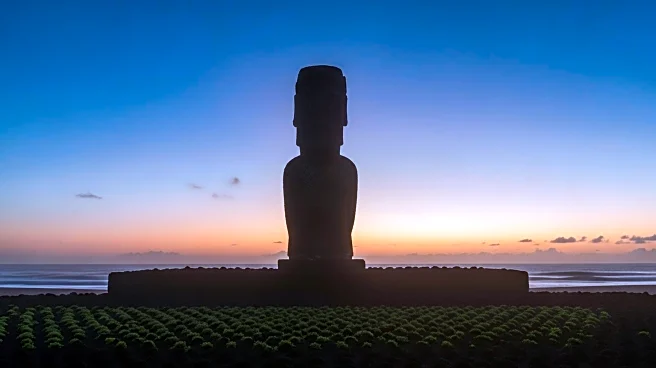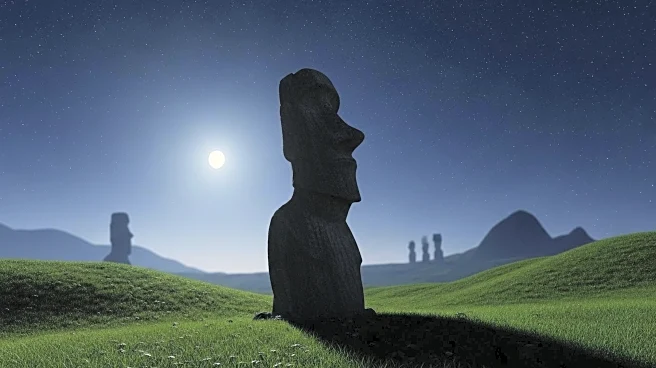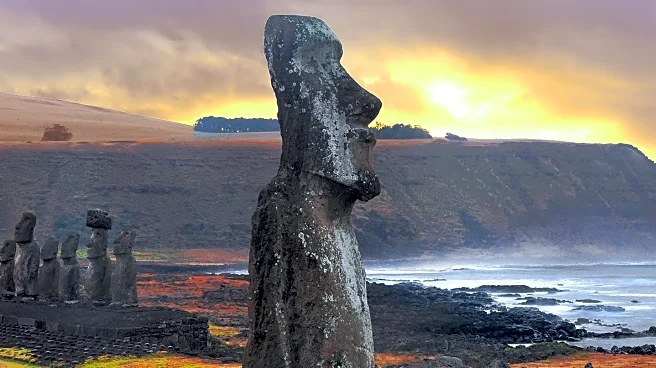What's Happening?
A recent study has provided new evidence supporting the theory that the giant stone statues on Easter Island, known as moai, were moved into place by 'walking' them. This theory, initially demonstrated in 2012 by U.S. anthropologists and archaeologists, involved rocking the statues side-to-side using ropes. The latest research, published in the Journal of Archaeological Science by Carl Lipo and Terry Hunt, further validates this hypothesis through physics, 3D modeling, and additional experiments. The study focused on nearly 1,000 moai, particularly 62 that were abandoned along ancient transport roads. These statues have a D-shaped base, offering stability for rocking movements. The roads, built by the Rapa Nui, were designed to facilitate this method of transportation, being too narrow for logrolling but ideal for guiding standing megaliths.
Why It's Important?
The validation of the 'walking' theory challenges previous beliefs that the Rapa Nui caused environmental collapse by cutting down trees to transport the moai using wooden rollers. This new understanding of the statues' movement method suggests a more sustainable approach by the islanders, potentially altering historical narratives about their environmental practices. The research also highlights the ingenuity of the Rapa Nui in engineering solutions to move massive structures, which could influence current archaeological methods and theories about ancient civilizations. The findings may impact tourism and cultural heritage preservation strategies on Easter Island, as they offer a deeper appreciation of the islanders' capabilities and traditions.
What's Next?
The study's authors, Lipo and Hunt, plan to continue their research to further substantiate the walking theory and address remaining criticisms. Future experiments may involve larger moai and longer distances to simulate historical transport conditions more accurately. The research could prompt revisions in educational materials and museum exhibits related to Easter Island, emphasizing the Rapa Nui's engineering skills. Additionally, the findings might inspire new archaeological investigations into other ancient civilizations' transportation methods, potentially uncovering similar techniques used elsewhere.
Beyond the Headlines
The study's implications extend beyond archaeology, touching on cultural preservation and the importance of respecting indigenous knowledge. The Rapa Nui's oral traditions, including folk songs about the statues walking, are validated by scientific evidence, underscoring the value of integrating local narratives into historical research. This approach fosters a more inclusive understanding of history and encourages collaboration between scientists and indigenous communities. The research also highlights the role of interdisciplinary methods, combining archaeology, physics, and cultural studies to solve historical mysteries.











